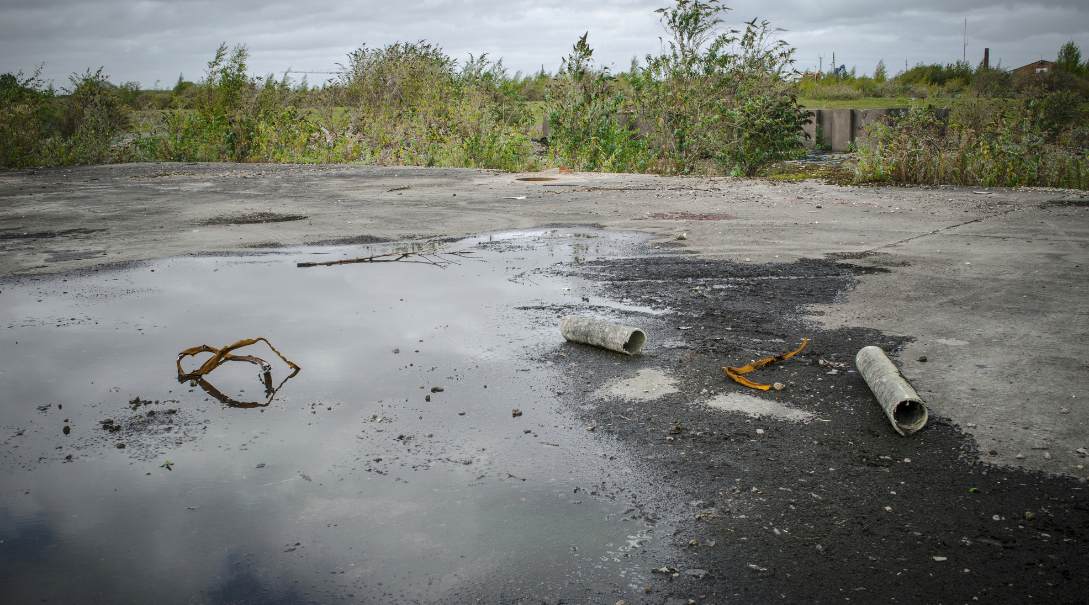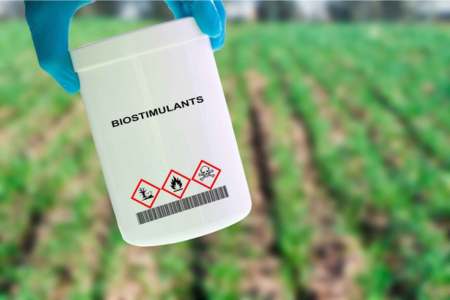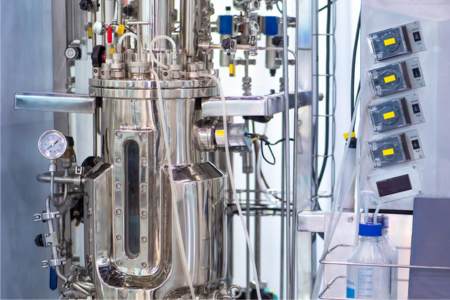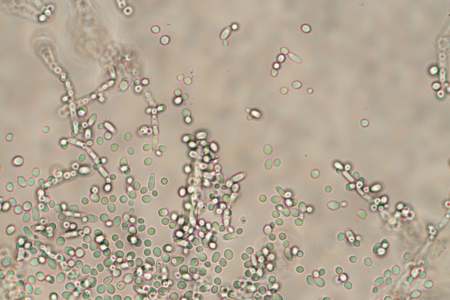Bioremediation is a cost-effective, eco-friendly solution for environmental restoration, reducing financial burdens often associated with traditional remediation methods. Unlike conventional techniques, bioremediation minimizes additional environmental harm. It allows for resource recovery from waste, contributes to resource sustainability, and enhances ecosystem resilience against future contamination. Moreover, it provides a viable pathway to meet stringent global environmental regulations.
Table of Contents
What is Bioremediation?
Bioremediation stands as a pragmatic and scientifically grounded approach to environmental restoration. This process primarily utilizes living organisms, including microorganisms like bacteria, fungi, and certain types of plants, to degrade, detoxify, or stabilize hazardous substances present within the environment. The principle behind bioremediation hinges on the natural ability of these organisms to break down harmful substances into less toxic or non-toxic compounds.
The practical applications of bioremediation span a wide range of environmental challenges. For instance, it’s employed to tackle pollution from petroleum hydrocarbons, heavy metals, pesticides, and various other organic and inorganic contaminants. The success stories for different types of bioremediation include:
- The cleanup of oil spills.
- Remediation of industrial waste sites.
- The restoration of areas contaminated by hazardous waste.
Importantly, bioremediation is a natural process that minimizes the potential for secondary pollution – a concern often associated with chemical or physical remediation methods.
Intrinsic and Extrinsic Bioremediation: An Overview
Understanding the types of bioremediation necessitates a grasp of its two overarching categories—intrinsic (natural) and extrinsic (enhanced) bioremediation. Intrinsic bioremediation capitalizes on the inherent ability of native organisms to mitigate pollution, functioning without human intervention. This process relies on the natural microbial communities present in the environment to break down contaminants over time.
Conversely, extrinsic bioremediation takes a more proactive stance by augmenting natural bioremediation processes, which is achieved through introducing external agents or altering environmental conditions to expedite the degradation of pollutants. For instance, adding specific nutrients to boost microbial activity or introducing pollutant-degrading microorganisms to the contaminated site falls under extrinsic bioremediation.
The decision between adopting intrinsic or extrinsic bioremediation hinges on various factors, such as the extent and type of contamination, time constraints, and the regulatory and financial framework within which the remediation project operates. Extrinsic bioremediation, while more controlled and potentially faster, may incur higher costs and necessitate more extensive management.
12 Bioremediation Techniques
The following types of bioremediation, each with its unique mechanism and application, offer a suite of solutions to restore contaminated environments. Below, we explore 11 prominent bioremediation techniques, delving into their applications, benefits, and how they contribute to environmental sustainability.
1. Bioventing
Bioventing, a subset of extrinsic bioremediation, utilizes aeration to energize microbial activities in unsaturated soil, accelerating the degradation of pollutants, notably petroleum hydrocarbon contaminants. It’s well-suited for areas with relatively permeable soil, as the aeration process requires air movement through the soil pores to stimulate microbial activity. This method holds a stamp of approval from reputable agencies like the U.S. Environmental Protection Agency for its efficacy in remediation projects concerning fuel spill sites.
Bioventing stands out for its cost-effectiveness, requiring fewer resources in terms of equipment and labor compared to more invasive methods like soil excavation. Its in situ treatment capability eliminates the need for soil transportation, reducing the risks of secondary contamination and ensuring a diminished project carbon footprint. This aspect is particularly crucial in regions with strict environmental regulations regarding soil disturbance and contamination spread.
Furthermore, the adaptability of bioventing is notable. It can be seamlessly integrated with other remediation strategies, such as bioaugmentation or biostimulation, to bolster its efficacy. This interoperability makes bioventing a versatile and economical choice in battling soil pollution.
2. Bioaugmentation
Bioaugmentation, a variant of extrinsic bioremediation, employs specially engineered strains of detoxifying bacteria to hasten the degradation of contaminants, transforming perilous zones into safer domains. This method effectively addresses environments tainted with specific hazardous substances that indigenous microorganisms may struggle to degrade.
This approach is cost-effective, particularly in situations necessitating targeted treatment of contaminants. Bioaugmentation not only accelerates the remediation timeline but also accommodates both in situ and ex-situ applications, tailoring to the unique demands of a remediation project. Furthermore, it can be amalgamated with other remediation strategies like bioventing or biostimulation, amplifying its effectiveness and offering a versatile solution in combating soil and water pollution.
Bioaugmentation is notably effective in environments with high concentrations of specific contaminants that are otherwise resistant to natural biodegradation processes. The use of specialized microbial strains can target these stubborn contaminants, making bioaugmentation a critical tool in scenarios where traditional bioremediation methods may fall short.
3. Biostimulation
By adding nutrients to contaminated environments, biostimulation invigorates native bacteria to enhance their pollutant-degrading capabilities. By fine-tuning environmental conditions, this method bolsters natural biodegradation processes to combat contaminants such as petroleum hydrocarbons.
This approach is cost-effective as it harnesses existing microbial communities, negating the need for external organisms. It is particularly well-suited for in situ remediation, minimizing the need for excavation or transportation of contaminated material, thus lowering both project costs and carbon footprint.
Moreover, biostimulation can be synergized with other remediation strategies like bioaugmentation or bioventing when dealing with complex contamination scenarios, enhancing its effectiveness and providing a more holistic solution to environmental pollution. It’s especially effective in sites where the native microbial communities are present but require a nutritional boost to efficiently degrade the contaminants at hand.
4. Phytoremediation
Phytoremediation utilizes plants to absorb, concentrate, and metabolize a wide array of contaminants. Through mechanisms like phytoextraction, phytodegradation, and phytostabilization, it orchestrates an eco-friendly cleanup, tackling pollutants from heavy metals to organic compounds.
This method is particularly effective in areas with shallow contamination and is suitable for both in-situ and ex-situ remediation. It’s a cost-effective and visually pleasing solution that also promotes public awareness and acceptance of remediation efforts.
Moreover, phytoremediation is a sustainable choice as it helps in soil stabilization and prevents erosion, alongside contaminant removal. It’s best employed in scenarios where time is not a critical factor, as phytoremediation tends to be a longer-term solution compared to other bioremediation methods.
Additionally, phytoremediation provides an opportunity for renewable biomass production. The plants used in phytoremediation can be harvested and utilized as biomass feedstock for the production of bioenergy or bio-based materials. This dual benefit of remediation and resource recovery underscores the potential of phytoremediation in contributing to a circular economy, where waste materials are repurposed into valuable resources.
5. Rhizofiltration
Rhizofiltration, a specialized form of phytoremediation, utilizes plant roots to filter and degrade contaminants in water, showcasing a natural synergy between flora and water purification. This method has proven effective, particularly in addressing heavy metal pollution in water bodies.
This technique is most effective in areas where contaminated water can be accessed by plant roots, either by natural occurrence or through controlled application. It’s a cost-effective solution for water treatment, especially in regions where conventional water treatment technologies may be financially prohibitive.
Furthermore, rhizofiltration requires minimal mechanical intervention and energy input, aligning with sustainability goals. It’s also a visually appealing and eco-friendly method that enhances the natural aesthetics of the remediation site while purifying water.
Moreover, rhizofiltration contributes to biodiversity and can improve habitat quality in remediation sites. By employing native or locally adapted plant species, rhizofiltration projects can provide habitat for local wildlife, insects, and other plants, fostering a biodiverse and resilient ecosystem while tackling water contamination issues. The simultaneous achievement of environmental remediation and habitat restoration showcases the multifaceted benefits of rhizofiltration in addressing environmental challenges.
6. Bioreactors
Bioreactors are engineered environments where microorganisms actively break down contaminants under optimized conditions. These controlled settings, encompassing tanks to vessels, represent a human-engineered approach to bioremediation, offering a precise, efficient avenue for treating a variety of contaminants.
This method is highly effective in scenarios where rapid remediation is required or the contamination is severe. It’s particularly suited for treating industrial wastewater and hazardous waste streams where the concentration of contaminants is high and requires a controlled setting for effective treatment.
Bioreactors offer the advantage of a controlled environment, allowing for the monitoring and adjustment of conditions like temperature, pH, and nutrient levels to maximize contaminant degradation. This control translates to a higher efficiency and effectiveness in contaminant removal.
Additionally, the use of bioreactors facilitates a higher degree of process control and monitoring compared to in-situ remediation methods. This level of control ensures the consistent and efficient degradation of contaminants, making bioreactors a preferred choice for complex or heavily contaminated sites. Furthermore, bioreactors can operate continuously or in batches, providing flexibility to accommodate varying project requirements and contaminant concentrations.
7. Mycoremediation
Mycoremediation shines a spotlight on fungi, leveraging their unique capabilities to degrade or sequester pollutants. With their extensive mycelial networks and enzyme systems, fungi effectively break down a myriad of hazardous substances, offering a mycological solution to environmental restoration.
This method is particularly potent against persistent organic pollutants (POPs), heavy metals, and hydrocarbons. Its application is versatile, encompassing soil, water, and even air pollution remediation, demonstrating its broad spectrum of utility in environmental cleanup efforts.
Moreover, mycoremediation is a cost-effective and sustainable remediation strategy. It requires minimal infrastructure and can often be implemented with local fungal species, reducing the overall cost and ecological footprint of remediation projects.
Additionally, the use of mycoremediation can lead to soil revitalization. As fungi break down pollutants, they also contribute to soil structure and fertility, promoting the restoration of healthy, functional ecosystems in areas previously marred by contamination.
8. Bioleaching
Bioleaching illuminates the remarkable ability of certain bacteria and archaea to extract metals from ores through mineral oxidation. This process not only showcases nature’s biochemical ingenuity but also presents a sustainable alternative to traditional metallurgical methods, underlining the versatile potential of this type of bioremediation.
This technique is particularly effective in recovering valuable metals like copper, gold, and nickel from low-grade ores or mine tailings. It’s a more environmentally friendly and cost-effective alternative to conventional smelting processes, which are energy-intensive and generate harmful emissions.
Moreover, bioleaching can play a significant role in the management of mine waste, reducing the environmental impact of mining activities. By leveraging the natural capabilities of microorganisms, bioleaching facilitates the safe and efficient recovery of metals, minimizing the release of toxic elements into the surrounding environment.
Additionally, bioleaching’s low operational costs and minimal environmental disturbance make it a preferable choice in regions with stringent environmental regulations. It offers a pathway to comply with environmental standards while ensuring the economic viability of mining operations.
9. Microbial Fuel Cells (MFCs)
Microbial Fuel Cells (MFCs) epitomize the innovative crossroads of bioremediation and energy generation. These pioneering devices utilize the metabolic activities of electroactive bacteria to transform organic and inorganic matter into electricity. These pioneering devices utilize the metabolic activities of electroactive bacteria to transform organic and inorganic matter into electricity. Through this process, MFCs contribute to waste degradation while concurrently generating clean energy. Their applications extend across wastewater treatment, remote sensor powering, and even bio-electrochemical synthesis, revealing a sustainable pathway for both pollution control and energy harvesting.
This technology is particularly impactful in remote or off-grid areas where conventional electricity supply is challenging. MFCs provide a decentralized energy solution alongside wastewater treatment, addressing two critical challenges with one integrated approach.
MFCs present a low-maintenance, sustainable energy solution, particularly useful in wastewater treatment facilities. They reduce the operational costs and energy consumption of these facilities by generating a portion of the required electricity onsite. This aspect is vital in moving towards more sustainable and energy-independent wastewater treatment operations.
10. Biocatalysis
Biocatalysis harnesses natural catalysts, specifically protein enzymes, to facilitate chemical transformations on organic pollutants. This technique is proficient in dealing with a variety of organic contaminants, rendering it a viable option for environments tainted with such pollutants.
Key to biocatalysis is the employment of protein enzymes, which expedite the breakdown of organic substances into less harmful compounds. The unique specificity of enzymes ensures that target pollutants are effectively degraded, embodying a precise and efficient approach to contamination mitigation.
This method is cost-effective due to the utilization of natural catalysts, which negates the need for synthetic chemicals that may pose additional costs and potential environmental risks. Biocatalysis stands out for its sustainable nature, aligning with broader environmental preservation goals.
Biocatalysis is adept for use in both in-situ and ex-situ remediation projects, demonstrating versatility in application. It performs exceptionally well in settings laden with organic chemical pollutants, offering a reliable solution to restoring such environments to a more natural and less toxic state.
11. Landfarming
Landfarming represents a straightforward yet potent approach to bioremediation. By employing basic practices like aeration and tilling, landfarming boosts the exposure of contaminated soil to atmospheric oxygen, facilitating microbial degradation of pollutants. This method shines particularly in treating soils tainted with petroleum hydrocarbons and other organic compounds. The core advantage of landfarming rests in leveraging natural biodegradation processes with minimal technical intervention, thereby presenting an economical and accessible solution for soil remediation.
This technique is a viable option for sites with large open spaces and is often considered in rural or less densely populated areas where other remediation methods may not be feasible or cost-effective. It’s a hands-on, low-tech solution that can significantly reduce the contamination levels over time.
Furthermore, landfarming can be a part of the solution to manage agricultural residues, industrial wastes, and contaminated soils in an integrated manner. The process can be fine-tuned by adjusting the frequency of tilling, the addition of nutrients, or the use of specific microbial strains to enhance the degradation of contaminants.
Additionally, the practice of landfarming contributes to soil health. Over time, as contaminants are degraded, the soil’s physical and chemical properties improve. The enhanced soil quality, in turn, supports better vegetation growth, promoting a gradual return to natural conditions and improving the land’s value and usability for future purposes.
12. Composting
Composting represents a controlled bio-oxidative process that expedites the decomposition of biodegradable pollutants. Under optimized conditions of moisture, oxygen, and temperature, a microbial consortium comprising bacteria, fungi, and actinomycetes breaks down organic matter into humus-like material. This process not only tackles harmful pollutants but also transforms waste into valuable compost, infusing the soil with crucial nutrients and organic matter. Composting epitomizes a circular economy model, where waste is repurposed into a resource, nurturing soil fertility and advancing sustainable waste management. Through composting, the crux of bioremediation is embodied—transmuting environmental challenges into ecological advantages, one compost pile at a time.
This method is particularly adept for organic waste management in agricultural, municipal, or industrial settings. The resulting compost is a coveted asset for agricultural and horticultural applications, enhancing soil structure, providing essential nutrients, and improving water retention in soil.
Furthermore, composting can play a crucial role in managing invasive plant species and pathogens. The high temperatures reached during the composting process can effectively destroy weed seeds and pathogens, rendering the resulting compost safer for use in various applications. This aspect of composting addresses another facet of environmental management, aiding in the control of invasive species and diseases that can adversely affect native ecosystems.
Real-World Implementations: Bioremediation Examples
Bioremediation is being used all over the world, and it’s showing us that it can help make the future cleaner.
For instance, the infamous Exxon Valdez oil spill in 1989 saw bioremediation take center stage as a means to alleviate the environmental catastrophe. By employing hydrocarbon-degrading bacteria, significant strides were made in restoring the affected marine and shoreline ecosystems.
Moreover, the utilization of phytoremediation at sites contaminated with heavy metals has showcased the method’s ability to not only detoxify the environment but also to recover valuable metals in the process. In particular, the use of hyperaccumulator plants like Alyssum Bertolini has demonstrated significant success in extracting nickel from contaminated soils.
Additionally, the deployment of bioaugmentation in treating industrial wastewater laden with hazardous chemicals is another testament to bioremediation’s practicality. Specialized bacteria strains are introduced to break down toxic compounds, rendering the water safer for discharge or reuse.
Furthermore, microbial fuel cells (MFCs) have been implemented in wastewater treatment facilities to concurrently treat wastewater and generate electricity. The operational success of MFCs underlines the potential of integrating bioremediation with renewable energy technologies, presenting a dual solution to pollution control and energy generation.
In agricultural realms, composting and landfarming have been effectively used to manage organic waste, improve soil fertility, and mitigate pesticide contamination. These practices underline the value of the various types of bioremediation in promoting sustainable agriculture and reducing the environmental footprint of farming operations.
These real-world implementations underscore bioremediation’s tangible benefits and its pivotal role in addressing diverse environmental challenges across the globe.
Explore Sustainable Solutions with AOTC
Bioremediation holds the promise of not only addressing environmental contamination but also fostering a sustainable future. The diverse types of bioremediation described above showcase the robust potential of bioremediation in tackling varied environmental challenges.
At AOTC, we harness the power of these bioremediation techniques to offer tailored, effective, and eco-friendly environmental remediation services. Our expertise is geared towards delivering tangible solutions that align with regulatory compliance and ecological sustainability. Embark on a journey towards a cleaner, greener future by leveraging AOTC’s environmental remediation services. Contact us today to learn more and discuss your project needs.




